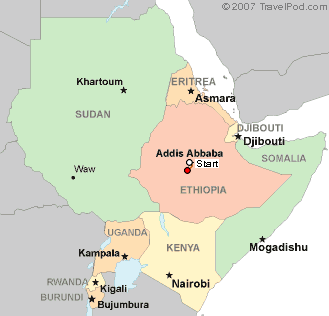On March 1, we also drove down to Tiya to see the stelae there.
According to UNESCO: “Of the roughly 160 archaeological sites discovered so far in the Soddo region, south of Addis Ababa, Tiya is one of the most important. The site contains 36 monuments, including 32 carved stelae covered with symbols, for the most part difficult to decipher, which are the remains of an ancient Ethiopian culture, whose age has not yet been precisely determined.”
Recent excavations revealed that the stones mark mass graves of both males and females (displaying breasts) who died between the ages of 18 and 30 and were laid to rest in a foetal position. One symbol appears to indicate a sword, the number of swords perhaps representing the number of people killed by the person buried below. Another symbol looks like typical African neck pillows. The symbol that looks like a Greek epsilon has as yet no known meaning.
On the way back, we saw a beautiful mountain, slowed down in a typical small town, and got stopped by a herd of cows, a premonition of events to come.
Back in Addis, the driver helped me change dollars to birrs at the bank and purchase some kersone in preparation for my camping trip the following day March 2. I took pictures of a couple of mosques in Addis.

